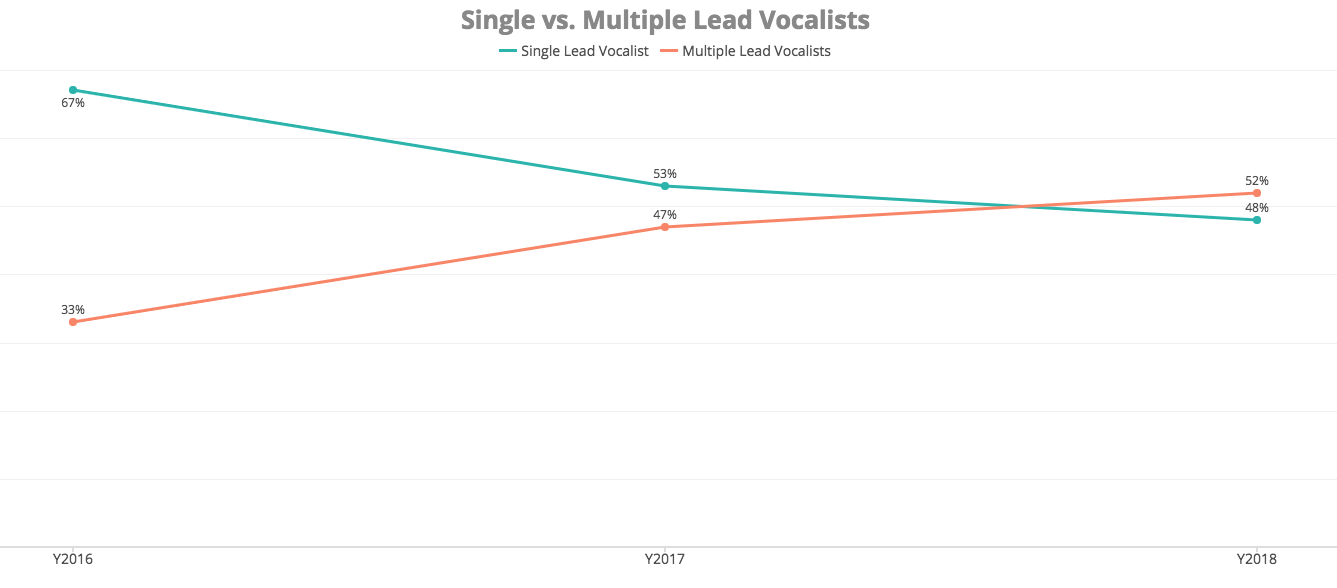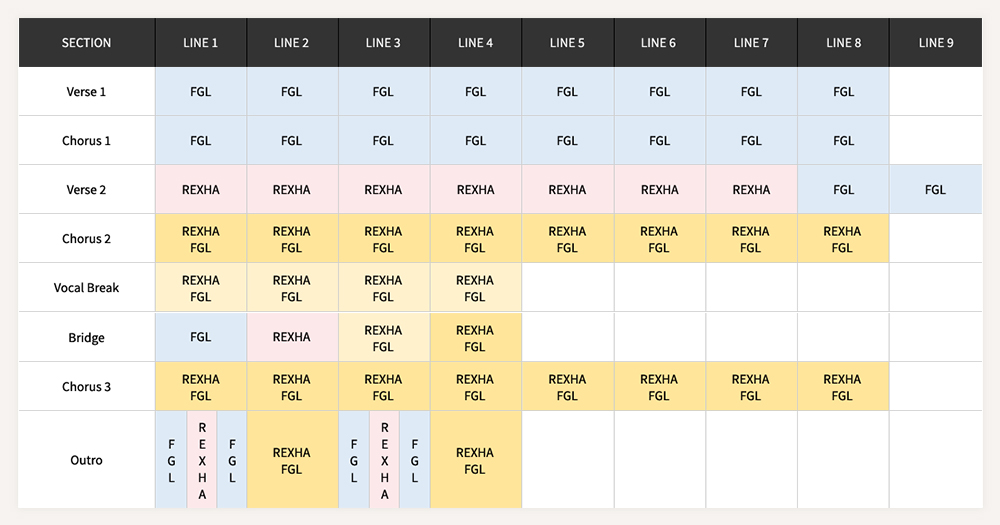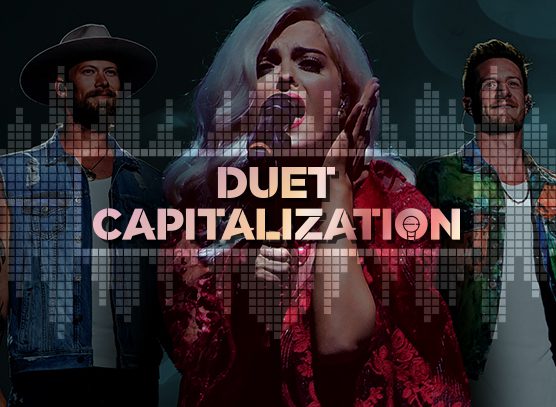Duets and group vocals have been growing in popularity in the Top 10 of the Hot 100. Since 2016, songs with multiple lead vocalists have increased from one-third of songs to just over half through the third quarter of 2018.


There are a host of benefits to structuring a song as a duet or group vocal. It can heighten engagement through cross-section vocal contrast and provide the narrative with more depth and impact. It can also expose an artist to new audiences and help bolster the clout of a song through combined superstar artist pairings.
Meant To Be, a collaboration between Pop artist Bebe Rexha and Country duo Florida Georgia Line (FGL), capitalizes on all of these fronts. The song’s stellar success (peaked at #2 on the Hot 100 and spent 40+ weeks atop the Hot Country Songs Chart) has made Rexha more popular than ever in the Pop mainstream and a household name with Country audiences as well. FGL maintain their position as Country A-listers and now hold the distinction of being the only Country duo to make two appearances in the Top 10 of the Hot 100 in the last five years (Sam Hunt, Maren Morris, and Chris Stapleton have all appeared just once).
However, the whole is greater than the sum of its parts. Together Bebe Rexha and FGL have achieved something with Meant To Be that neither artist could have achieved on their own.
In this article we dive into Meant To Be’s meticulous duet structure, and how it helped the song succeed with both Pop and Country audiences alike.
The chart below illustrates the line-by-line duet arrangement of the song.


Verse 1 & Chorus 1


The first two vocal sections of the song – verse 1 and chorus 1 – are sung by the song’s featured duo, Florida Georgia Line (FGL), and communicates the protagonist’s P.O.V. However, it’s quite atypical to have a song’s featured artist appearing before the primary artist. By featuring FGL and their Country-influenced vocals right from the get go, Meant To Be is primed to connect with a Country audience right out of the gate as opposed to a Pop audience.
Verse 2


Bebe Rexha, the song’s primary artist, makes her first appearance one-third of the way into the song in the second verse and introduces the antagonist’s P.O.V. into the narrative. She’s a soloist on the first seven lines, followed by FGL making an unexpected return for the last two lines, which provides verse 2 with an engaging vocal and narrative twist.
Chorus 2


Now that FGL and Rexha have appeared together in the second verse – albeit independently – they come together once again in chorus 2 and harmonize throughout the section, with Rexha being slightly more prominent in the mix. Not only does this provide engaging vocal contrast against the three sections that precede it, but it has a narrative implication as well. It depicts the protagonist and antagonist being on the same page for the first time in the song.
Vocal Break (Post Chorus)


The vocal break post-chorus features a continuation of the FGL/Rexha harmony that was established in the preceding chorus. However, FGL is now the dominant vocal in the mix, which provides engaging cross-section vocal contrast.
Bridge


The bridge provides an engaging twist around three-quarters of the way into the song with FGL and Bebe Rexha being featured both concurrently and independently in the mix. The section unfolds in a methodical manner beginning with a solo FGL vocal on line 1 followed by a solo Rexha vocal on line 2. Both artists harmonize on line 3 with FGL being the dominant vocal in the mix, and both artists harmonize once again on line 4 but this time with near-equal prominence. The build across the section from singular to harmonized coupled with the line-to-line vocalist trade-offs provides the bridge with a highly engaging quality that also bolsters the uncertainty in the lyrics.
Chorus 3


Following the line-to-line vocal trade-offs in the bridge, both artists harmonize once again in near-equal prominence throughout the third and final chorus. Here the harmonization continuity is important because it provides the listener with a respite from the line-to-line and phrase-to-phrase vocal trade-offs that transpired in the bridge that preceded it, and the outro that follows it.
Outro


The last section in the song – the outro – provides an engaging variation on the bridge duet structure by featuring FGL and Rexha trading phrases as opposed to lines.
The section begins by FGL and Rexha alternating the phrases, “If it’s meant to be (FGL) / it’ll be (Rexha) / it’ll be (FGL).” Both artists then harmonize together on the line that follows, “Baby if it’s meant to be.” The same flow then repeats on lines 3 and 4, which brings the song to a conclusion in a highly infectious and engaging manner. This vocal structure has narrative implications as well, as it depicts both the protagonist and antagonist sharing the same faith-based sentiment at the end of the song – “if it’s meant to be, it’ll be.”
Meant To Be’s highly effective duet structure is just one of the many things that helped it become a grand success. Be sure to check out the full Meant To Be Deconstructed Report for a deep dive into the songwriting and production techniques used to craft this song.
To read this report Hit Songs Deconstructed subscribers can log in here. Not a subscriber? Click here.



